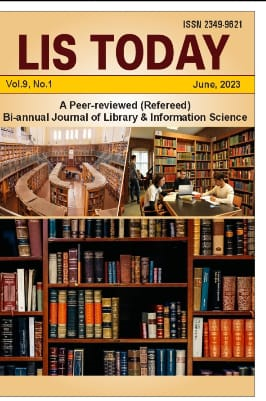Collection Development of Digital Archives in India: A Case Study of Jadavpur University
DOI:
https://doi.org/10.48165/lstoday.2021.7.12.3Keywords:
Jadavpur University, Institutional Repositories, Digital Libraries, Open Access, DOAR, IR, Digital ContentsAbstract
The free flow of information is a fundamental principle for bridging the gaps between have and have not. ICT has a major impact of materials for research. Innovationin ICT has brought radical changes in the way information is generated, stored, processed and disseminated. Recent advances in converging technologies especially Internet and web technology has paved the way to create the open access archives on repositories. The objective of the open access movement is to make scholarly articles freely available in digital form to anyone anywhere in the world. The open access and open archives movement, the need for changes in the scholarly communication to remove barriers to access.
References
1. Mamta L. (2010). Institutional Repositories: A tool for scholarly communication. Proc. 55thILA conference, Jan. 21-24, 2010, pp.249-56
2. Jain, S.K. and Shrivastava, A. Academic institutional Repositories in India: Global Visibility for an Institution‘s Scholarly Communication.www.drtc.isibng.ac.in:8080/handle/1849/413(Accessed on 01/07/2021)
3. Das, A. K., Sen, B.K. and Dutta, C. Collection Development in Digital Information Repositories in India Visual bharat@TDIL 17(2005): pp 91-96 (Accessed on 23rdJune,2021)
4. Johnson, R (2002). Institutional Repositories: Partitioning with faculty to enhance Scholarly communication. D.Lib Magazine, Vol 8 (11)
5. Hirwade, M. And Hirwade, A (2006). Institutional Repositories: Challenges and Opportunities for LIS professionals in Digital age. Library HeraldV44.pp. 146-157.
6. Idib 8
7. http://en.wikipedia.org/wiki/Institutional-repository (visited on July 5, 2021)
8. http://www.opendoar.org(visited on June 23, 2021)

